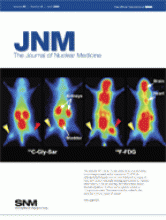TO THE EDITOR: I read with great interest the study by Henneman et al. (1) suggesting that response to cardiac resynchronization therapy (CRT) is related to the presence of left ventricular (LV) dyssynchrony as assessed by phase analysis with gated myocardial perfusion SPECT. The study confirmed that responders and nonresponders had comparable baseline characteristics, except for histogram bandwidth, which was significantly larger in responders than in nonresponders. The methods and interpretation of the results, however, raise several concerns:
It is well known that normal myocardial motion is complex, with 3 separate components: radial contraction, longitudinal shortening, and rotation. Myocardium has a transmural heterogeneity of contraction under normal conditions: Contractility decreases from subendocardium to subepicardium, and during a reduction of myocardial perfusion capable of inducing myocardial ischemia, the subendocardial layer undergoes contractility impairment even in the absence of functional impairment of the subepicardial layer (2,3). A study by Helm et al. (4) confirmed that dyssynchrony as assessed by longitudinal motion could be of a sensitivity different from that of dyssynchrony as assessed by circumferential motion, follows a time course different from that of dyssynchrony as assessed by circumferential motion, and may manifest a benefit from CRT during specific cardiac phases depending on pacing mode. In a study by Henneman et al. (1), however, a total of 90 projections was obtained over a 360° circular orbit and data were reconstructed by filtered backprojection and then reoriented to yield gated short-axis images. That is to say, LV dyssynchrony was assessed from circumferential motion. Are the sensitivity and specificity for the prediction of response to CRT by gated myocardial perfusion SPECT better if LV dyssynchrony is assessed from longitudinal motion? Are the sensitivity and specificity for the prediction of response to CRT by gated myocardial perfusion SPECT better if LV dyssynchrony is assessed from both longitudinal motion and circumferential motion?
Footnotes
-
COPYRIGHT © 2008 by the Society of Nuclear Medicine, Inc.







